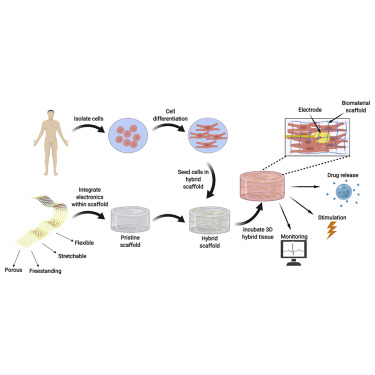iScience ( IF 5.8 ) Pub Date : 2020-01-11 , DOI: 10.1016/j.isci.2020.100833 Ron Feiner 1 , Tal Dvir 2

|
One of the major hurdles faced in tissue engineering is the inability to monitor and control the function of an engineered tissue following transplantation. Recent years have seen major developments in the field by integrating electronics within engineered tissues. Previously, the most common types of devices integrated into the body used to be pacemakers and deep brain stimulation electrodes that are stiff and non-compliant; the advent of ultra-thin and flexible electronics has brought forth a significant expansion of the field. Recent developments have enabled interfacing electronics onto, into, and within all tissues and organs with minimal adverse reactions. These have introduced the ability to engineer tissues with built-in electronics that allow for remote monitoring and regulation of tissue function. In this review, we discuss the development of technologies that allowed for the formation of tissue-electronics hybrids and give an overview of the existing examples of these hybrid “cyborg” tissues.
中文翻译:

使用内置电子设备设计智能混合组织。
组织工程面临的主要障碍之一是无法监测和控制移植后工程组织的功能。近年来,通过将电子器件集成到工程组织中,该领域取得了重大进展。此前,集成到体内的最常见设备类型是起搏器和深部脑刺激电极,这些电极僵硬且不合规;超薄和柔性电子产品的出现带来了该领域的显着扩展。最近的发展使得电子设备能够连接到所有组织和器官上、内部和内部,并且不良反应最小。这些技术引入了利用内置电子器件来设计组织的能力,从而可以远程监控和调节组织功能。在这篇综述中,我们讨论了形成组织电子混合体的技术的发展,并概述了这些混合“机器人”组织的现有例子。



























 京公网安备 11010802027423号
京公网安备 11010802027423号